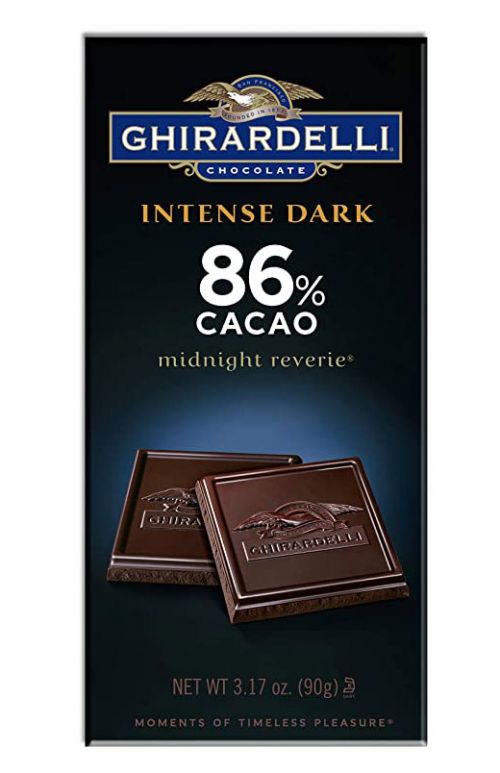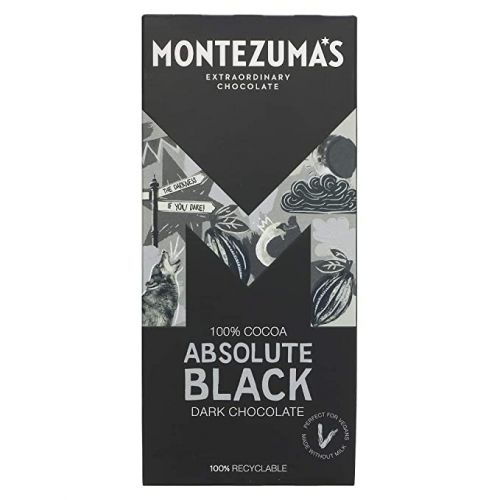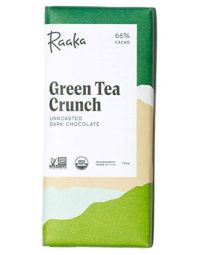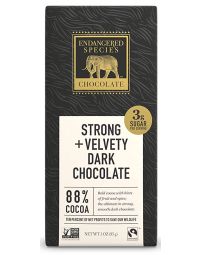Though considered a “snack” or “dessert” food with a high caloric content, dark chocolate has a number of health benefits. With a higher cocoa content than milk chocolate, dark chocolate contains a number of phytochemicals and vitamins derived from cocoa beans. For a small treat, dark chocolate has a better nutritional value than many other candy alternatives, but may contain an unhealthy level of cadmium depending on where the cocoa was sourced.

By definition, dark chocolate does not contain any milk solids. It is usually categorized by its cocoa content: dark chocolate tends to be 70% or more cocoa solids, though it can sometimes be as low as 30%. This cocoa is processed from cacao beans from the cacao tree (Theobroma cacao), which grows in tropical regions. To make the bitter cocoa palatable, fat and sugar is added to enhance its taste. For dark chocolate that is 70-85% cocoa, the nutritional breakdown is around 46% carbohydrate, 43% fat, 8% protein, and 1% water content. It has approximately 6.5 calories per gram, or about 185 calories in a one-ounce single-serving bar.1
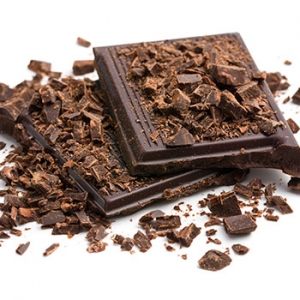

Dark Chocolate is a Source of Minerals
The nutritional value of chocolate comes from the cacao beans, which are rich in vitamins, minerals, and antioxidant compounds. Many of the minerals that your body needs can be found in cocoa powder and dark chocolate in small amounts. Iron, which carries oxygen in the hemoglobin proteins of your red blood cells, is the most predominant of these; an ounce of dark chocolate contains around 3.4mg of iron, or about 26% of your daily recommended intake. That one ounce will also have around 65mg or 18% of your daily magnesium, 88mg or 12.6% of your daily phosphorus, and 0.9mg or 10% of your daily zinc, all important for bone strength and the function of certain enzymes. Other minerals found in cocoa powder include calcium, potassium, and sodium.1
The nutritional value of chocolate comes from the cacao beans, which are rich in vitamins, minerals, and antioxidant compounds. Many of the minerals that your body needs can be found in cocoa powder and dark chocolate in small amounts. Iron, which carries oxygen in the hemoglobin proteins of your red blood cells, is the most predominant of these; an ounce of dark chocolate contains around 3.4mg of iron, or about 26% of your daily recommended intake. That one ounce will also have around 65mg or 18% of your daily magnesium, 88mg or 12.6% of your daily phosphorus, and 0.9mg or 10% of your daily zinc, all important for bone strength and the function of certain enzymes. Other minerals found in cocoa powder include calcium, potassium, and sodium.1
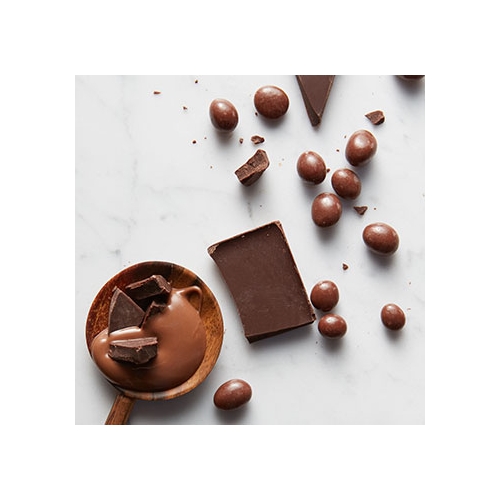

Cocoa beans also provide low amounts of a number of vitamins. The most abundant vitamin in dark chocolate is vitamin B6,which is an essential component of several enzymes that metabolize proteins, glucose, and lipids. One ounce of 70-85% cocoa dark chocolate contains around 108μg (micrograms) of vitamin B6or about 8% of your daily recommended intake. Other vitamins found in cocoa powder and dark chocolate include thiamine (vitamin B1), riboflavin (vitamin B2), Niacin (vitamin B3), vitamin E, and vitamin K. A trace amount of vitamin A is also present.1
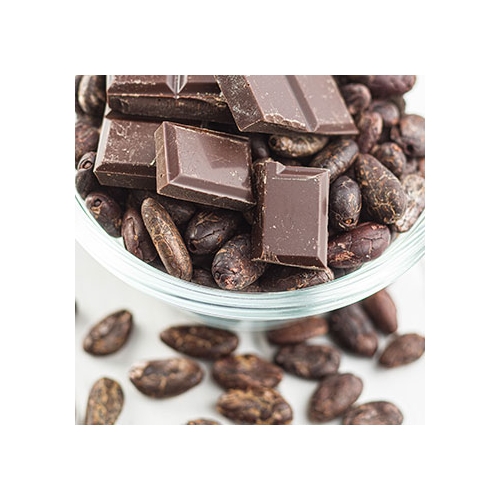

Cocoa beans produce a number of biologically active phytochemicals - organic molecules produced by plants. A familiar phytochemical found in cocoa powder is caffeine, a mild stimulant which can temporarily boost energy and alertness.2 In addition, cocoa contains several polyphenols, including catechins, anthocyanins, and proanthocyanidins. These can aid in the healthy function of the lining of your blood vessels.3 Among these polyphenols, flavanols are particularly beneficial as they have been shown to help lower blood pressure and facilitate platelet clotting during wound healing.4 Several compounds in cocoa also have antioxidant and anti-inflammatory activities.3
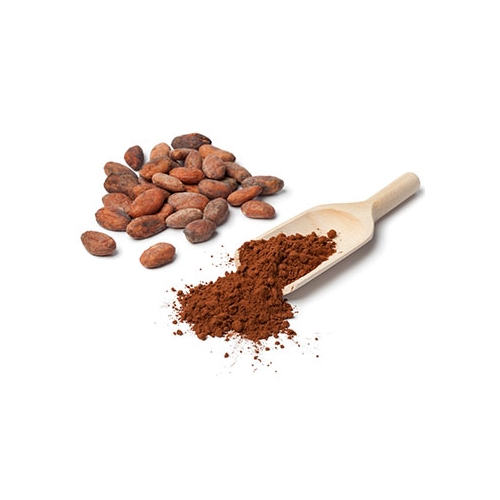

Potential Health Benefits of Dark Chocolate
Our Recommendation: Ghiradelli Intense Dark Midnight Reverie (86% Cacao) which has been tested by SOW to have safe levels of cadmium and lead.
Our Recommendation: Ghiradelli Intense Dark Midnight Reverie (86% Cacao) which has been tested by SOW to have safe levels of cadmium and lead.
Our Recommendation: Ghiradelli Intense Dark Midnight Reverie (86% Cacao) which has been tested by SOW to have safe levels of cadmium and lead.

Cacao trees can take up cadmium from the environment and store it in their cacao beans. Cadmium is a heavy metal known to cause kidney failure, bone demineralization, and cancer. It occurs naturally in low levels but can contaminate the soil in higher concentrations from agricultural and industrial pollution. New regulations from the European Union have set stricter limits as to what cadmium levels are safe to eat, and the state of California has the most stringent regulation at a maximum of 4.1μg cadmium per day. A large proportion of commercial chocolate bars tested exceed this amount.7,8
The non-profit organization "As You Sow" has compiled a fairly comprehensive list of which chocolate brands exceed California’s safety standards for lead and cadmium, and which meet these safe levels.
The top 5 brands are listed below, least amount of lead and cadmium, but high in Cacao:
Montezuma Dark Chocolate Absolute Black 100% Cocoa
Chocolove Strong Dark Chocolate 70% Cocoa
Ghiradelli Intense Dark 86% Cacao
Endangered Species Chocolate Strong + Velvety Dark Chocolate 88% Cocoa
Trader Joe’s Pound Plus 72% Cacao Dark Chocolate
"ppm" refers to parts per million, the concentrations of lead and/or cadmium tested in a chocolate product found in a single lab test.
"ug/serving" refers to micrograms per serving, the amount of lead and/or cadmium in a single serving, calculated based on the serving size on the product label.
[1] United States Department of Agriculture. “Basic Report: 19904, Chocolate, dark, 70-85% cacao solids.” National Nutrient Database. https://ndb.nal.usda.gov/ndb/foods/show/6453
[2] Nawrot P, Jordan S, Eastwood J, Rotstein J, Hugenholtz A, Feeley M. 2003. “Effects of caffeine on human health.” Food Addit Contam. Jan; 20(1):1-30. https://www.ncbi.nlm.nih.gov/pubmed/12519715
[3] Magrone T, Russo MA, Jirillo E. 2017. “Cocoa and Dark Chocolate Polyphenols: From Biology to Clinical Applications.” Front Immunol 8:677. https://www.ncbi.nlm.nih.gov/pmc/articles/PMC5465250/
[4] Montagnana M, Danese E, Angelino D, Mena P, Rosi A, Benati M, Gelati M, Salvagno CL, Favaloro EJ, Del Rio D, Lippi G. 2018. “Dark chocolate modulates platelet function with a mechanism mediated by flavan-3-ol metabolites.” Medicine (Baltimore). Dec; 97(49):e13432. https://www.ncbi.nlm.nih.gov/pubmed/30544424
[5] Ried K, Sullivan TR, Fakler P, Frank OR, Stocks NP. 2012. “Effect of cocoa on blood pressure.” Cochrane Database Syst Rev. Aug 15; 8:CD008893. https://www.cochranelibrary.com/cdsr/doi/10.1002/14651858.CD008893.pub2/full
[6] Higginbotham E, Taub PR. 2015. “Cardiovascular Benefits of Dark Chocolate?” Curr Treat Options Cardiovasc Med. Dec; 17(12):54. https://www.ncbi.nlm.nih.gov/pubmed/26456559
[7] European Commission. “Cadmium in food.” https://ec.europa.eu/food/safety/chemical_safety/contaminants/catalogue/cadmium_en
[8] “Toxic Chocolate.” As You Sow. https://www.asyousow.org/environmental-health/toxic-enforcement/toxic-chocolate/
-
Healthiest Dark Chocolate
By Dr. KarenDecember 21, 2021
Search the blog
Article Categories
- All Articles (95)
- Rating Charts (1)
- Beauty & Skincare (17)
- FAQ (0)
- Hair Care (9)
- Health & Wellness (12)
- Anti-Aging (4)
- Kid's Health (0)
- Makeup (2)
- Men's Health (2)
- Oral Care (3)
- Sunscreen (7)
- Skin Tools & Treatments (10)
- Supplements (26)
- Videos (0)


